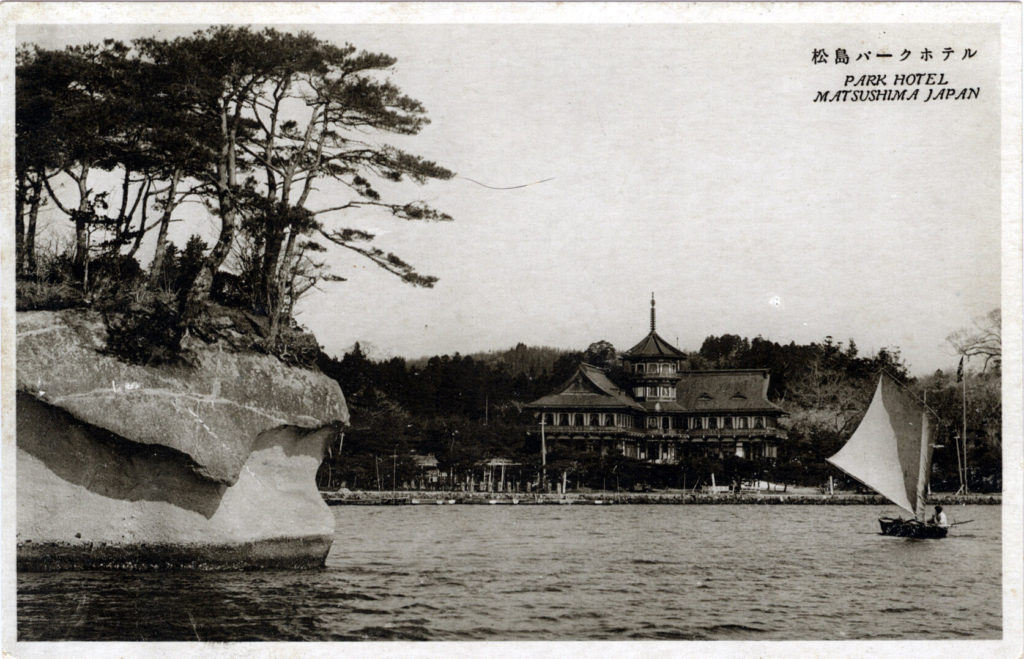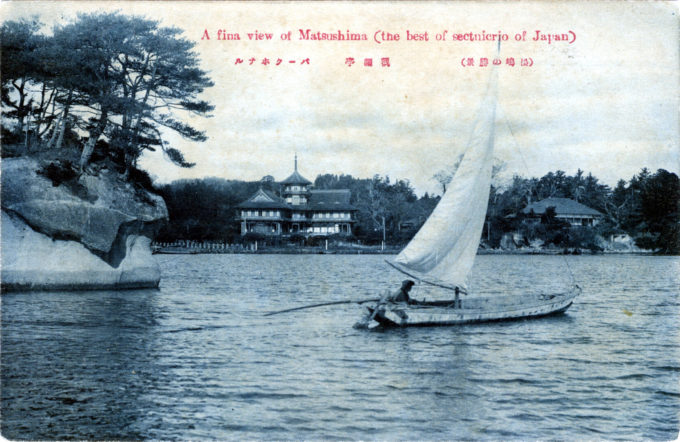See also:
View of Matsushima, Inland Sea, c. 1910
Godaido Temple at Matsushima, c. 1910
Koshikibu no Naishi “Lady in Waiting”, c. 1930
The Big Torii from Matsubara Itsukushima, Aki, c. 1910
“The Matsushima Park Hotel is a handsome new structure combining Japanese charm with comfort and luxury desired by foreign travelers. English spoken. Superbly situated on the shore of the matchless Matsushima Bay, the most beautiful and celebrated of the Sankei, or Three Great Sights of Japan. No foreigner should leave Japan without seeing Matsushima and its wonderful island-studded bay, noted alike for its charm, its restfulness, and its fine fishing.
“… The hotel is under the management of the well-known Seiyoken Hotel of Tokyo and the special supervision of the Miyagi Prefectural Government. Noted for its excellent food and faultless service. [The] accommodations are unsurpassed, and [the] rates are moderate enough to permit the most economically disposed traveler to make a long stay in this Japanese paradise.”
– Terry’s Japanese Empire, by T. Phillip Terry, 1914
The Matsushima Park Hotel was designed by Czechoslovakian architect Jan Letzel (1880-1925), more famously known as the architect of the Hiroshima Prefectural Industrial Exhibition Hall (the now-named “Hiroshima A-bomb Dome“). The hotel, completed in August 1913, was the first resort hotel built in the Tohoku region north of Tokyo. Planned as a first-class European-style, the Matsushima Park Hotel was built of Japanese cypress (hinoki) and bore a resemblance to a Japanese temple. Its wings crossed each other at right-angles; opened to the bay, one could be reminded of a soaring bird.
Shortly after being opened by the Miyagi Prefectural government, the Tsukiji Seiyoken assumed operation of the hotel and ran the establishment as a branch of its Tokyo operations. After WWII the Park Hotel was used by Occupation forces as an officers’ billet. On March 2, 1969, the Matsushima Park Hotel caught fire and burned down.



